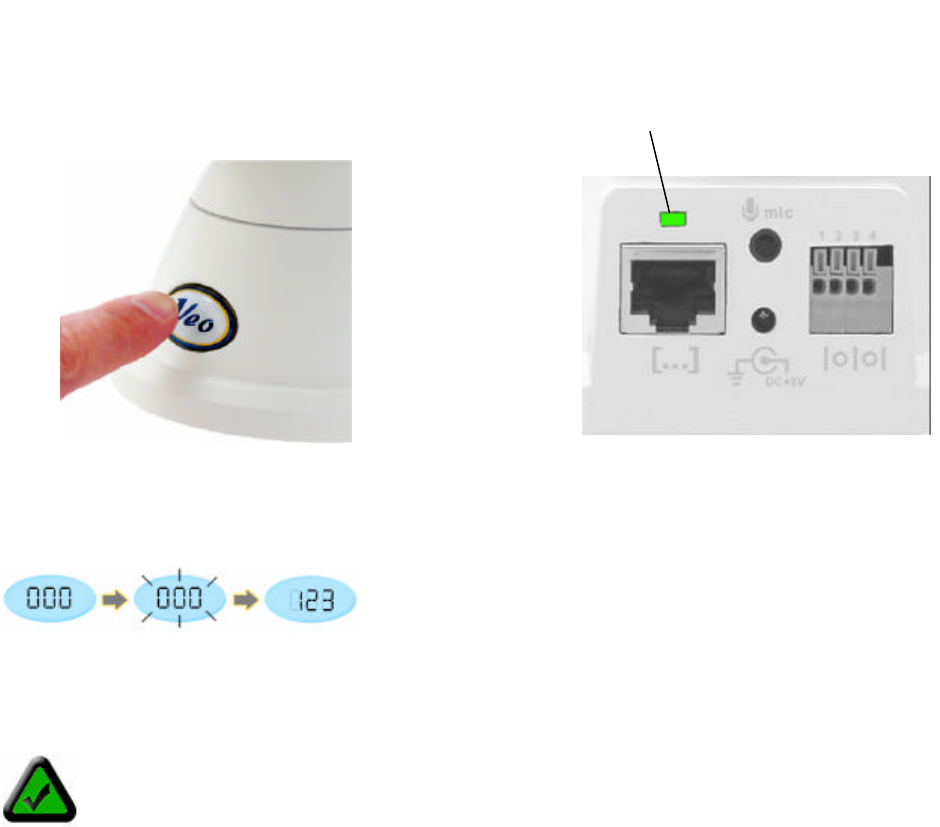
Page 10 of 69
Turning the camera on
Step 6. Observe the IP address display on the lower left side of the camera.
As soon as you power up your camera you’ll notice that the IP address display starts blinking. This means the
camera is searching for an IP address using DHCP. After a few seconds the display stops blinking and shows
the last 3 digits of the address it received.
At this point the camera is communicating with your network and is ready to be accessed. You’re almost ready
to access its home page and begin using the camera. There are two ways to point Internet Explorer to the
camera and open its homepage:
1. Install and run the Veo Observer Setup Utility included on the CD-ROM. The Setup Utility will locate
cameras on your network automatically. Refer to Chapter 4 if you need help installing the software and
Chapter 5 for detailed help with the Setup Utility.
2. Open Internet Explorer and type the camera’s IP address into the address bar.
Determining a Camera’s full IP address using the IP display
Other than the last 3 digits, all devices on a LAN share the same IP address. The portion of the address
common to all devices is known as the network address. Most home networks use either 192.168.0 or
192.168.1 for their network address. If you know your network address, you can simply combine it with the 3
digits shown on the camera’s display to determine the complete IP address of the camera. For example, if your
Note: If the display continues to blink for more than a minute, your network may not support DHCP
and you will need to assign an address manually. Refer to Section 5.1: Manually Assigning a
Static IP Address for more information on manually assigning an IP address.
Ethernet status LED on the back of
the camera is li
LAN connection. The LED will blink
when there’s activity.
. Press the power button on
the front of the camera to turn it on.
The button lights up confirming that
the camera is powered up.
